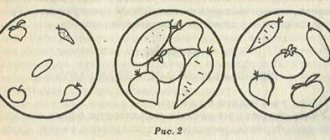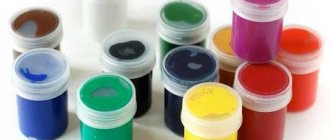GCD move
I. Organizational moment
Educator: Hello, guys!
Educator: In what mood did you come to kindergarten today (Children’s answers: cheerful, good)
Educator: Then let's give each other smiles and start our lesson.
Educator: Today I want to invite you on an exciting journey. Do you know what time of year it is? ( Autumn )
Educator: That's right, autumn ! How has the weather changed at this time of year? (It's getting colder)
.
Educator: What is happening to nature? (The leaves on the trees change color and fall off)
Educator: What do you call birds that fly to warmer climes? (Migratory birds)
.
Educator: Why do these birds fly away? (They have nothing to eat)
.
autumn outside .
So I want to invite you to visit in the fall . (The teacher invites the children to go to the table where paintings with images of autumn landscapes )
Educator: Children, what time of year is depicted in the paintings? ( Autumn )
.
Educator: Why did you decide that? (The leaves on the trees are yellow, red, orange; there are a lot of fallen leaves).
Educator: Yes, most of the leaves on the trees are yellow and orange. That’s why they say: “Golden autumn ”
.
So why is autumn called golden ? (Because the leaves on the trees are red, orange and yellow)
.
Educator: What else has autumn ? (Children come to the table where the vegetables are)
.
Look how many different vegetables there are. They all grow by autumn . Do you know what kind of vegetables these are? (Children name the vegetables lying on the table.)
Game “Guess what I’ll name”
.
(The teacher describes a vegetable, and the children must name it)
.
Carrot, cucumber, pear, potato, apple .
Educator: That's right, it's an apple . Look how red it is. Apple , it is very useful for each of us. If we constantly eat them, we will not get sick, because apples contain a lot of vitamins . And right now, at the beginning of autumn , they begin to harvest the apples that we will eat in the winter. So, today we will draw apples , but first let's warm up a little.
That's what an apple is ! (Stand up, arms to the sides)
The juice is full of sweets (Hands on the belt)
Stretch out your hand, (Stretch your hands forward)
Pick an apple (Hands up)
.
The wind began to swing the twig, (We swing our hands at the top)
It's hard to get an apple (Catch up)
I'll jump, I'll extend my hand (Jump)
And I’ll quickly pick an apple ! (Clap your hands above your head)
IV. Work on the topic GCD
Educator: Guys, now I invite you to sit down at the tables. (Children sit at tables)
Educator: Today we will try to draw an apple using a brush and paints. What color will the apple ? (Children's answers)
Educator: Tell me, please, what shape is the apple ? (Round)
Educator: Let's take a brush and draw a circle in the air (Children draw in the air)
.
Educator: What color should we draw the twig and leaves? (Children's answers)
Educator: First you need to draw an outline , and then carefully color it, try not to go beyond the line.
Educator: Children, what time of year were we talking about? (About autumn )
.
Educator: Why is autumn called golden ? (Because the leaves on the trees turn red, orange, yellow).
Educator: What vegetables ripen by autumn ? (Beets, carrots, onions, cabbage, tomatoes, cucumbers)
.
Educator: Let's look at what kind of apples you got . (Children's work is placed for viewing)
. Do you like our drawings?
Educator: Well done guys, you did a great job. It seems as if Autumn visited us and left its colorful mark. And your apples
Abstract of the GCD for drawing “Journey into a fairy tale. Searching for Kolobok" (middle group) Summary of educational activities on artistic and aesthetic development in the middle group. Tartynskaya M. A. Topic: “Journey to a fairy tale. Searching for Kolobok." Priority. GCD summary for drawing with cotton swabs in the senior group "Apples" GCD summary for drawing in the senior group "Apples" (non-traditional technique of drawing with cotton swabs) Topic: "Apples" (drawing with cotton swabs. GCD summary for drawing in non-traditional techniques "Autumn Gifts" ( second junior group) Extra-curricular activity Shevtsova Anastasia Notes of the GCD “Drawing” - Autumn Gifts (second junior group) Notes of the GCD “Drawing” lesson.
Summary of GCD in the middle group on cognitive development on the topic “Gifts of Autumn. Mushrooms" Vitaliy Sorokina Summary of GCD in the middle group on cognitive development on the topic "Gifts of Autumn. Mushrooms" Goal: expand children's ideas.
Notes on educational activities for drawing using the monotype technique “Butterfly” (middle group) Notes on educational activities “Entertaining learning and development” nomination “Artistic and aesthetic direction”, middle group. Preface: Monotype.
Summary of a lesson in the preparatory drawing group “Gifts of Autumn” Purpose: to teach on the basis of impressions and knowledge and skills, to independently determine the content of a still life, its composition, the color scheme of objects.
Modeling “Apples on a tree” middle group. Program content: Teach children to sculpt an apple, conveying the shape and characteristic features: a large apple. Develop creativity.
GCD for drawing “Beautiful flowers have bloomed” (middle group) Objectives: to cultivate interest in visual arts, accuracy in drawing. form an idea of flowers (stem,...
Holiday “On a Visit to Autumn” (middle group) “On a Visit to Autumn” (middle group) Vedas: What an artist he is! All the forests are gilded! Even the heaviest rain did not wash off this paint. Guess.
Scenario for the autumn holiday in kindergarten. Middle group. Children enter the hall to the music and stand in a semicircle. Presenter: The holiday came into every home today, Because autumn is wandering outside the window. I looked in.
Source
Notes on drawing on the topic “Gifts of Autumn” in the senior group
Summary of the drawing lesson “Gifts of Autumn. Fruit fairy tale"
Task
: Learn to draw a simple composition of three objects in watercolor. Learn to convey the shape, color and size of objects in a drawing.
Equipment and materials.
Reproductions of still lifes, still life (nature) Watercolor, sheets of white paper for watercolor A4 size, brushes, cups of water, wet wipes for each child
— Guys, remember, we looked at I. T. Khrutsky’s painting “Flowers and Fruits.”
- What did you see in the picture? (Children's answers)
This painting is called “Flowers and Fruits”. Why did the artist call it that? (Children's answers)
— What genre of painting does it belong to?
Still life translated from French means “dead nature,” but this name does not define the entire essence and diversity of this genre. Looking at still lifes, we can observe the richness of the natural world and the world of things surrounding humans. Artists, depicting ordinary things, show their beauty and uniqueness. In still lifes, things speak about themselves, invite us to admire the beauty of their shape, texture, color, and make us feel the aroma.
— What is the difference between natural fruits and flowers and those depicted in the picture?
— What color of fruit did the artist depict?
— What do you see as the beauty of this combination and form?
— What first of all attracted your attention?
Invite children to find the compositional center of the picture, pay attention to the combination of colors, i.e., color.
Visit us today
I left some gifts, I asked you to pass them on
What if we like this treat,
Then we can draw everything without delay.
What has the generous autumn prepared for us? Look how beautiful the fruits are!
(Children look at fruits, describe their shape and color)
Invite the children to make a composition out of them in a vase. Say that objects in the composition may partially cover each other, for example, an apple may lie on the table in front of a vase.
Show children how to correctly sketch the main details with a simple pencil - when drawing a still life from life, it is important to accurately convey the position of objects and all the details. The line should be barely noticeable so that it does not show through the watercolor later.
The next stage of work is laying in tone. Without drawing details, in general, a light tone is applied in watercolor. Once dry, a more saturated one is applied to highlight the dark parts. The main thing in watercolor is that it remains transparent. Draw children's attention to the fact that when objects are illuminated, light reflections are visible on them - depending on the lighting from one side or the other. To convey the highlight in the drawing, a light tone remains in its place, a dark tone is not superimposed.
(Turn on low music, children get to work)
When finished, review all the drawings with the children and come up with a name for your still life.
Source




